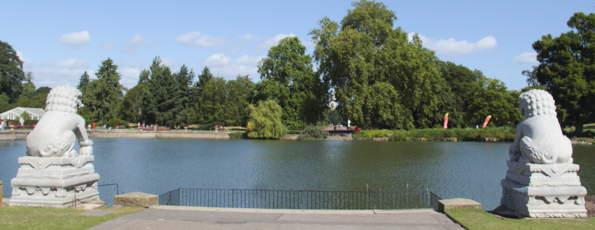
Entering Kew Gardens through the Victoria Gate I was immediately enthralled by the sight of its beautiful pond protected by two Chinese guard lions against a splendid backdrop of the Palm House.
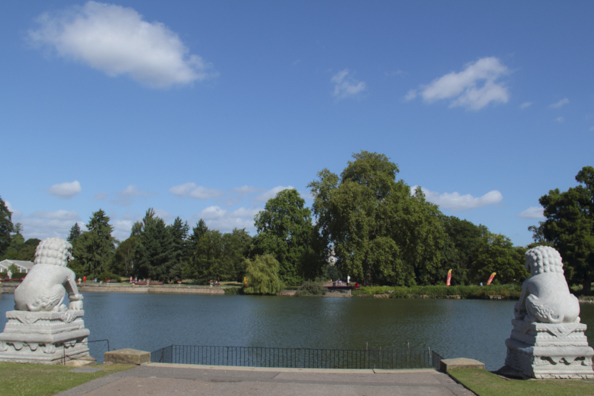
A circuit of the pond seemed a good way to start my visit. As I wandered around admiring the vegetation, water fowl and a fountain featuring Hercules wrestling the river god Achelous I noticed several of signs and pathways pointing in different directions and realised I was never going to see everything in one day. I needed a plan and a ride on the Kew Explorer would help me devise one. The explorer is a hop-on and hop-off service but as I had no idea where to do either I did the full seven-stop circuit. This forty minute tour was a journey through the history and the horticulture of Kew Gardens. Laura, our driver, had suggestions regarding how we could spent the day and I soon had a list of priorities.
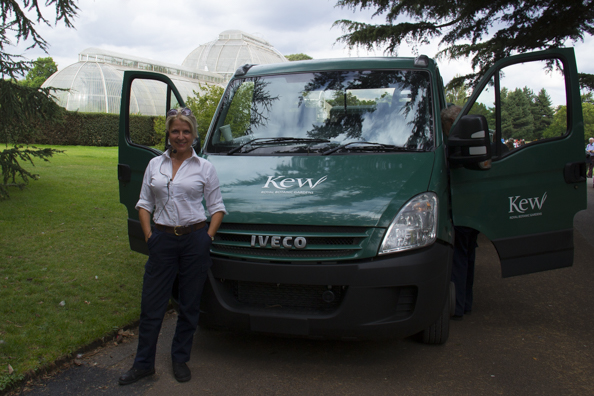
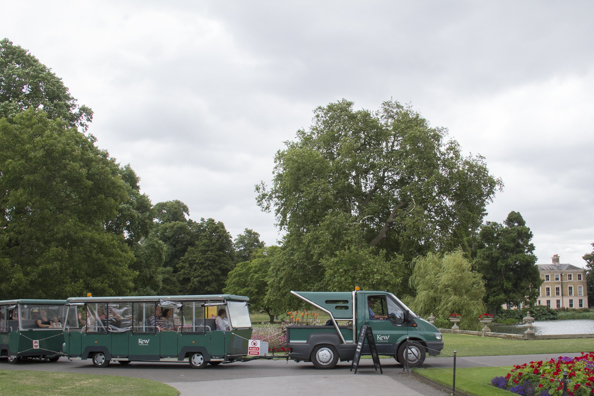
I decided to start at the Palm House where the Explorer tours start and finish. This huge Victorian greenhouse (based on the design of a ship) is one of forty-four Grade 1 listed buildings in the Gardens and was the model for greenhouses of that era worldwide and is now the most important surviving structure of its kind.
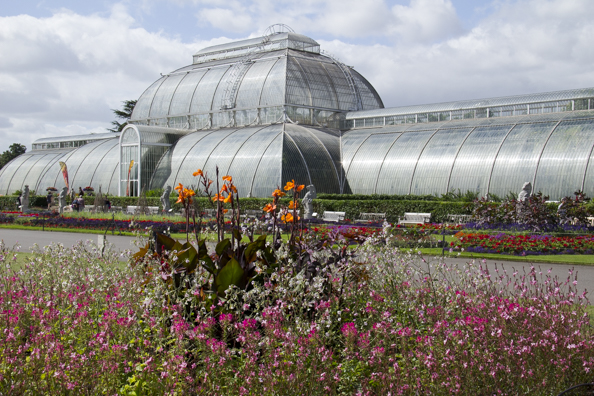
While exploring I solved the mystery of the huge chimney by the Victoria Gate. It is the Italianate Campanile smoke stack which was linked to the greenhouse by pipes going through a tunnel and provided an escape for fumes when coal was used to heat it. The Palm House has undergone several restorations and between 1984 and 1988 it was emptied for the first time in its history and completely dismantled, restored and rebuilt. After exploring the rain forest environment on the ground floor I went downstairs to the marine aquarium and then up the stairs to the walkway in the roof of the dome.
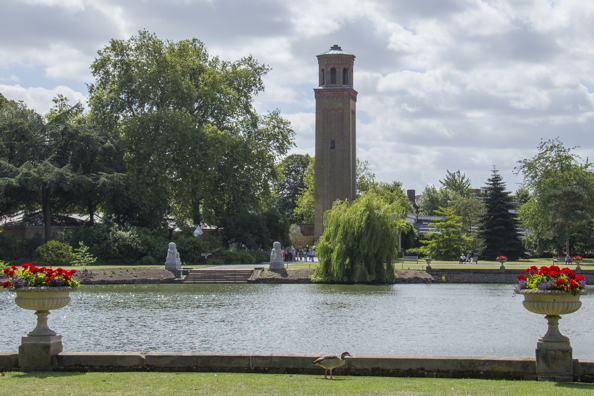
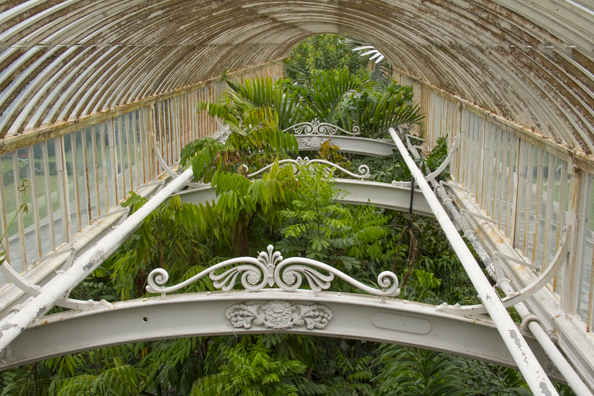
Laura, our Kew Explorer guide, had warned us that the rose garden behind the Palm House was not at its best nevertheless I decided to have a look as it is such an important part of the history of the gardens. The original garden was laid out in 1845 by the landscape designer William Andrews Nesfield but in 1923 the area was converted to a rose garden with 6,000 roses. During the Second World War when citrus fruits were unavailable rose hips were harvested from these plants and used to produce a syrup rich in vitamin C. In 2005, to celebrate 250th anniversary of the gardens, the rose garden was replanted inspired by its original layout.
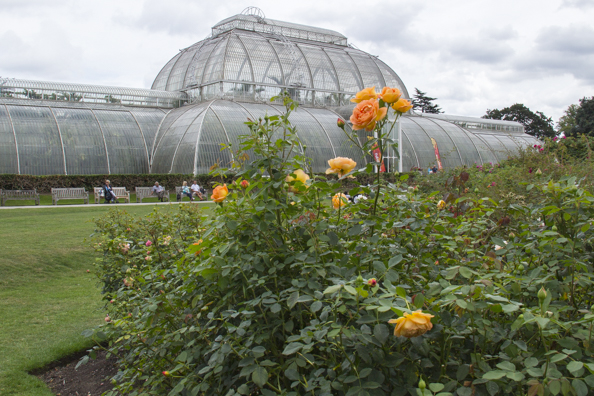
Coming round the corner of the Palm House I discovered a line of sculptures I had not noticed before. These are part of the Palm House Parterre (ornamental garden) an intricate geometric pattern of flower beds created by William Andrews Nesfield after the Palm House was completed in 1848. Sculpted in Portland stone they represent ten heraldic figures, the ‘Queen’s Beasts’, and replicated the sculptures that stood at the entrance of Westminster Abbey during the coronation of Queen Elizabeth II in 1953. Reflecting her royal lineage they include they include the Falcon of the Plantagenets, the Black Bull of Clarence, the Unicorn of Scotland and my favourite, the White Greyhound of Richmond.
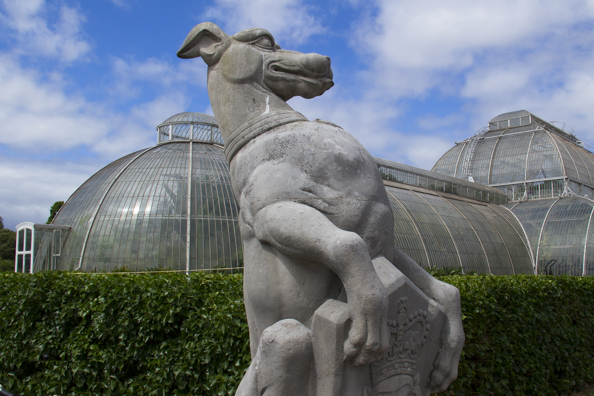
Nearby, shrouded by shrubs the Waterlily House caught my attention and, as I think waterlilies are magical I had to go inside to have a look. I was rewarded by the amazing sight of the giant pads of the Victoria cruziana. But the reason this small glasshouse was built in 1852 was to house another giant water lily the Victoria amazonica. Unfortunately, although all the other waterlilies and lotus thrived the star of the show did not and was moved elsewhere and the Waterlily House became a tropical habitat and then a showcase for medicinal and culinary plants. In 1991 it was converted back to its original purpose and now houses the Victoria cruziana waterlily discovered at the same time as the Victoria amazonica. Its large fragrant flowers change from white to pink and purple before sinking below the surface of the water – they only last for 48 hours. Apart from a pleasing variety of other water lilies the Waterlily House also has a collection of gourds which were one of the earliest fruits to be domesticated.
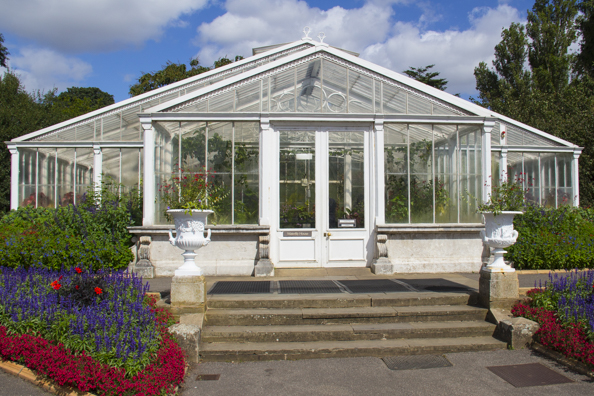
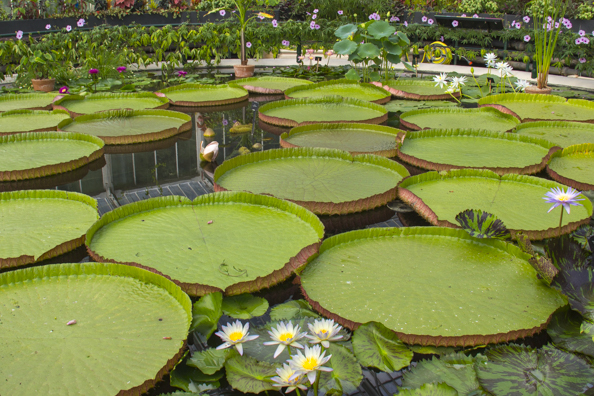
My list of priorities had taken a hit but it had been worth it and now it was time to take the direct route to my next objective, Kew Palace. I took the most direct route, along the Broad Walk. The Broad Walk runs from the Palm House to the eastern end of the Orangery and then turns a corner to the Elizabeth Gate. I did not anticipate any distractions as it is currently being re-designed and when it is finished in the summer of 2016 it will be the longest double herbaceous border in the UK measuring over 300 metres on each side of the newly re-surfaced drive. Originally laid out by William Andrews Nesfield in 1845-6 this the Broad Walk has undergone several changes but some of the original trees have survive including the weeping beech (Fagus sylvatica ‘Pendula’). New trunks have grown where its vast drooping boughs have touched the ground creating a natural cavern. Tempting signs tried to divert me and eventually I succumbed to one that directed me to the Princess of Wales Conservatory as I had glimpsed its unusual structure through the trees.
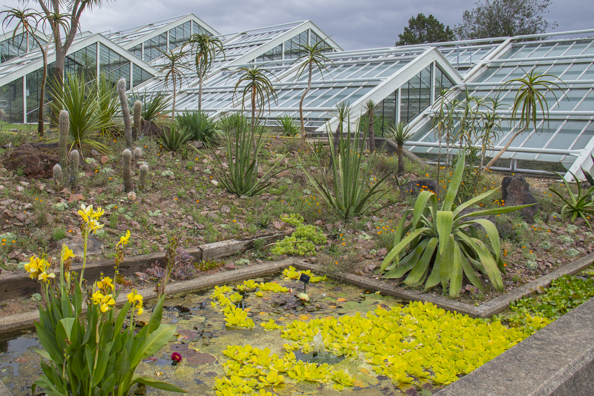
I did not have time to do justice to the ten climatic zones of this conservatory including Madagascan baobab trees, carnivorous plants from Asia and orchids from Central America. Named after Princess Augusta, the founder of Kew Gardens, this complex building with ten computer-controlled climatic zones was opened in 1987 by Diana, Princess of Wales. I walked quickly through the different zones to the orchid house one of my favourite plants and I spent some time there appreciating their delicate blooms.
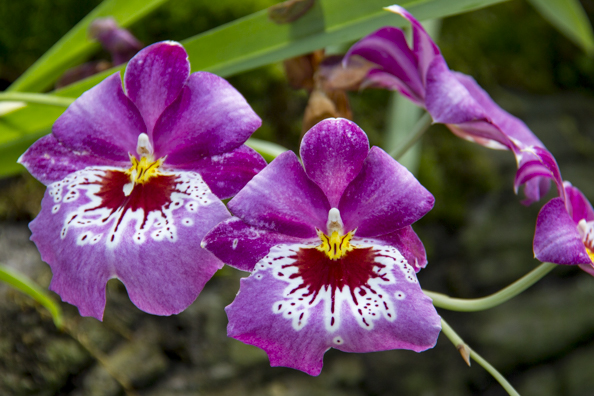
As I left the conservatory I noticed a very strange half-dome structure which required investigation. It was the Davies Alpine House which opened in 2006, the fourth in a succession of Alpine houses since 1887. This modern structure employs a mixture of traditional practices and the latest technology to create the cool, dry and windy conditions favoured by alpine plants all year round.
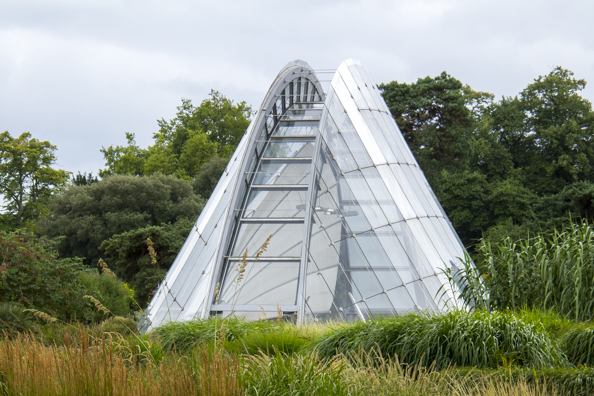
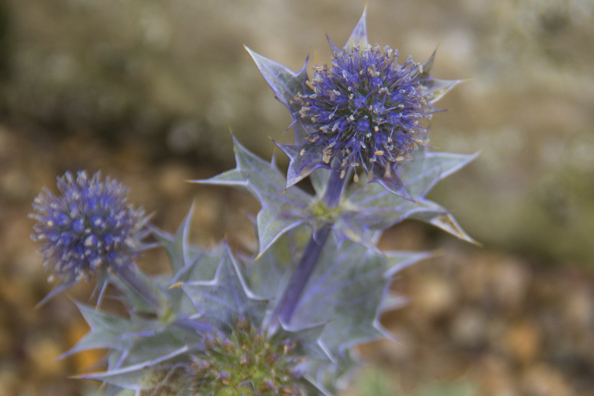
The construction of the new Alpine House also brought changes to its neighbour the Rock Garden which was built in 1882 in response to the donation of a large collection of alpine plants. Initially constructed with limestone blocks over the years these have gradually been replace with Sussex sandstone as it retains more moisture allowing the cultivation of a wider variety of plants.
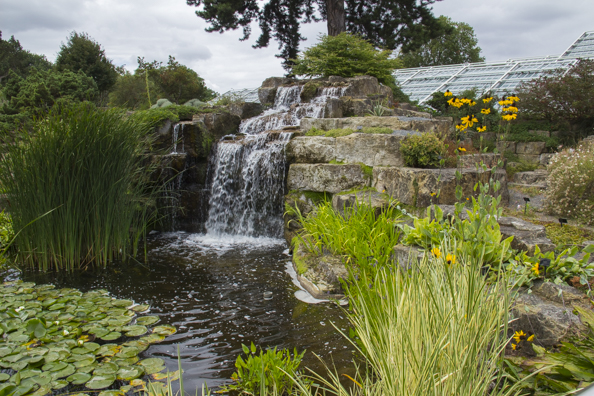
Just beyond the Rock Garden I noticed the entrance to a walled garden and thinking it might lead me to Kew Palace I went inside. Built on the site of a garden that supplied produce for royalty it is an amazing kitchen garden aptly named the Kew on a Plate Kitchen Garden and bursting with a huge variety of fruit and vegetables.
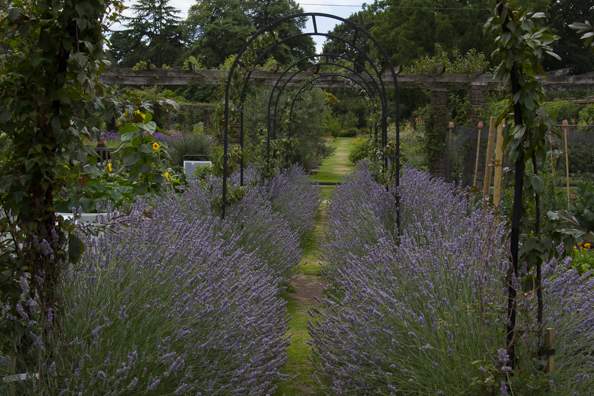
Back on the Broad Walk I marched purposefully along passing the lovely Orangery a Grade 1 listed building and the only surviving plant house designed by Sir William Chambers who was employed as an architect for the gardens by their founder Princess Augusta. It was built to grow citrus plants but this proved to be impossible as it did not let in enough light and it was used for other plants, then it became a timber museum until it was converted into a tea room in 1989 and in 2002 it became the restaurant that it is today. It would have been nice to sit on the large terrace enjoying a drink but there was no time and I moved on.
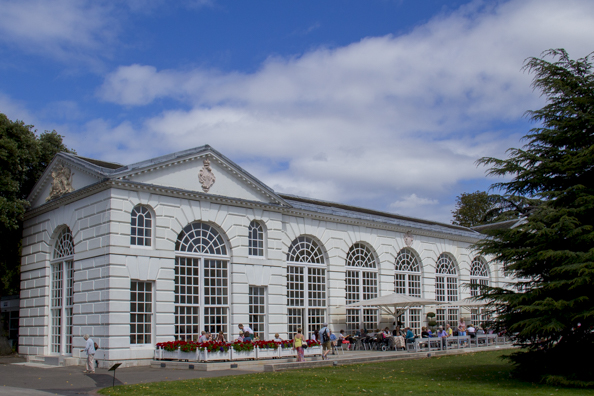
And suddenly there was my objective, the unmistakable orange building, the Dutch House more commonly known as Kew Palace and once a favourite of the royal family. English royalty have been associated with Richmond since the sixteenth century when Henry VII built the Palace of Richmond in the royal hunting park there and his court would move there for the summer. The presence of nobility in the area had a great influence on the village of Kew nearby which expanded rapidly and by the seventeenth century it was a hub of power and political intrigue. For this reason a wealthy Flemish merchant, Samuel Fortrey, decided to build Kew Palace , his summer retreat, there.in 1631. It remained in his family for another generation before being occupied by a succession of wealthy tenants before coming into the possession of the royal family.
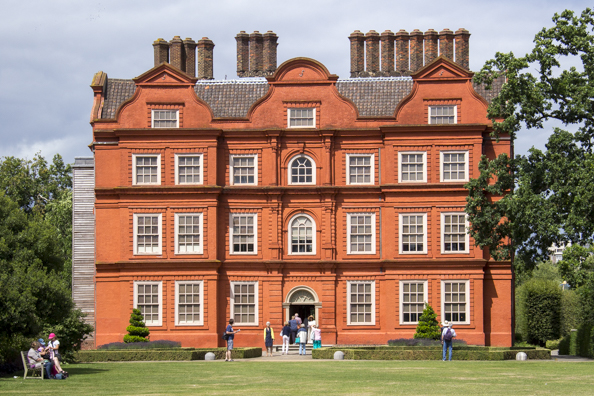
George II and his Queen Caroline leased Kew Palace in 1729 as it was ideal for their large family (9 children) they moved their daughters into Kew Palace in 1729 although they themselves continued to use Richmond Lodge. In 1730 their son Frederick, Prince of Wales, built his own house, the White House, opposite the palace. It was Frederick who started a Physick Garden around Kew Palace and from this, with the help of his wife, Augusta, Princess of Wales (parents of the future George III) more extensive gardens were developed and attracted a succession of royalty, gifted gardeners and scientists to experiment with plants and garden landscapes. Frederick died before his father and his son, George III, became king. Kew Palace remained the country retreat of his aunts when George III purchased the property. He and his wife Charlotte had fifteen children and spent many happy summers at Kew Palace. In later life he was incarcerated here during his bouts of madness. During periods of sanity George demolished the White House and began the construction of a new palace that was never completed. Charlotte died at Kew Palace in 1818 and after that the royal family lost interest in the palace and it lay dormant until Queen Victoria (granddaughter of George III) opened the palace to the public in 1898. It was closed in 1996 and, after a total restoration was re-opened to the public in 2006.
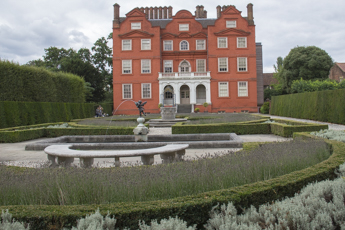
From the Palace I had a good view of the Queens garden a charming seventeenth century style garden that was opened in 1969 and includes an interesting collection of statuary and a gazebo on a mound.
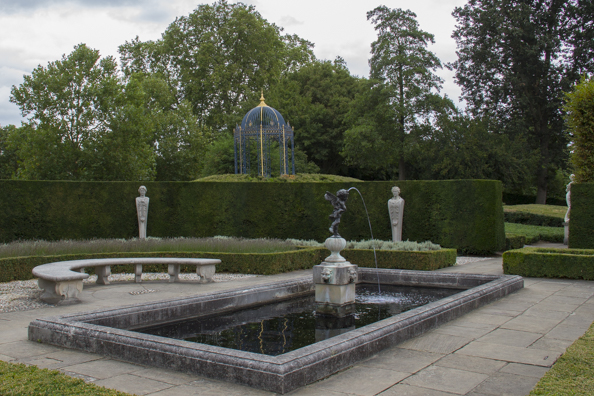
At the side of the palace is a small garden containing medicinal plants reflecting their importance in the seventeenth century when the palace was built. During that period plants were more important for their culinary and medicinal properties than their beauty. In cooking they were used to mask the taste of tainted meat and strewn (either fresh or dry) around rooms to combat the smell of unwashed bodies. Nosegays of flowers were carried for the same reason and also to ward off the plague. Some plants were credited with supernatural powers which were thought to be more effective if harvested at a particular time such as a phase of the moon or picked from a certain place, for example, a graveyard. Vestiges of these days are still with us for example the use of pot-pourri and judges carrying nosegays when they process at the beginning of the judicial year.
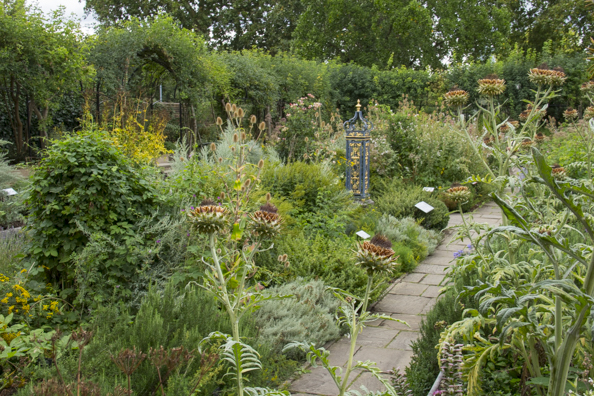
There was just enough to visit the Royal Kitchens before they closed. The kitchens were built a short distance from the palace as a fire precaution and it did not matter that the food was cold when it arrived at the table as long as it looked good. These kitchens served members of the royal family from 1729 to 1818 when they closed their doors after the death of Queen Charlotte. During that period very few changes were made and plans to build a larger kitchen were abandoned. It was thrilling to walk around the rooms on two storeys and to imagine the numerous members of staff scampering round the great kitchen or preparing bread in one of the four preparation rooms downstairs. Upstairs were the offices where the clerk of the kitchen kept a watch on what was taken from the stores and maintained meticulous records – a copy of his ledger is on display and makes very interesting reading
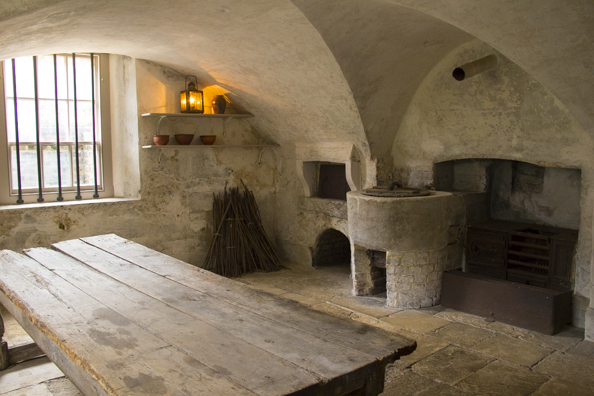
I left the gardens through the Elizabeth Gate aware that I had only seen a small part of Kew Gardens – I was already planning another visit as there was so much more to see.
***********************************************************
Getting there
Kew Gardens are situated next to the river Thames just 10 miles west of central London but as parking is very limited visitors are encouraged to use public transport. There are many options, bus, train, underground, overground, boat and cycle racks are provided for those who chose to cycle there. First check the map to decide which gate is the best entrance before planning your journey bearing in mind that the Kew Explorer starts near the Victoria Gate.